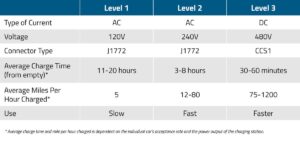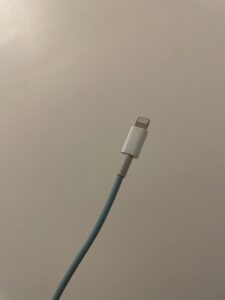How long does the Kindle Paperwhite battery last? This question has crossed the minds of many avid readers who rely on the convenience of this portable e-reader. Well, the answer might surprise you. The Kindle Paperwhite battery lasts an impressive amount of time, allowing you to indulge in your favorite books without the worry of constantly recharging. But how does it manage to stay powered for so long? Let’s dive into the details and shed some light on the remarkable battery life of the Kindle Paperwhite.
How Long Does the Kindle Paperwhite Battery Last?
When it comes to e-readers, battery life is a crucial factor to consider. After all, the last thing you want is for your device to run out of battery in the middle of an engrossing read. The Kindle Paperwhite, known for its sleek design and impressive features, is no exception. In this article, we’ll delve into the topic of how long the Kindle Paperwhite battery lasts, providing you with all the essential information you need to know.
Understanding the Kindle Paperwhite Battery
Before we dive into the specifics, let’s take a moment to understand the battery technology behind the Kindle Paperwhite. The device is equipped with a lithium-ion polymer battery, commonly found in modern electronic devices. Lithium-ion batteries are known for their high energy density, long lifespan, and excellent rechargeability, making them ideal for portable devices like e-readers.
Battery Capacity
The Kindle Paperwhite comes with a battery capacity of 1420mAh. This capacity is significant as it determines how long the battery can power your device. However, it’s essential to understand that battery capacity alone does not provide a definitive answer regarding battery life. Factors such as usage, wireless connectivity, screen brightness level, and other settings can impact the actual duration of battery performance.
Factors Affecting Kindle Paperwhite Battery Life
Now that we have a basic understanding of the Kindle Paperwhite’s battery, let’s explore the various factors that affect its battery life:
1. Usage and Reading Habits
One of the primary influences on the Kindle Paperwhite battery life is your usage pattern. If you tend to read for extended periods, you may experience a shorter battery life compared to someone who reads for shorter durations. Continuous usage, such as reading for several hours without interruptions, will drain the battery more quickly than sporadic reading sessions.
To optimize battery usage, consider taking breaks between reading sessions or switching off the device when you’re not actively reading. By managing your reading habits, you can extend the Kindle Paperwhite’s battery life.
2. Wireless Connectivity
Another crucial factor that affects battery drainage is the wireless connectivity of your Kindle Paperwhite. The device offers Wi-Fi and, in some models, cellular connectivity options. When wireless connectivity is enabled, your device continually seeks and maintains a connection with Wi-Fi networks or cellular networks, resulting in increased battery consumption.
If maximizing battery life is a priority, you can disable the wireless connectivity when not required. The Kindle Paperwhite allows you to easily toggle the wireless options in the settings menu, enabling you to conserve battery power when you’re not actively browsing or downloading content.
3. Screen Brightness
The Kindle Paperwhite features an adjustable front light that allows you to customize the brightness level according to your preference. Higher brightness settings consume more power, resulting in faster battery drainage.
To optimize battery usage while enjoying a comfortable reading experience, consider setting the brightness level to a moderate setting. Adjusting the brightness to match the ambient lighting conditions can enhance your reading experience while preserving battery life.
4. Sleep Mode and Power Off
When you’re not actively using your Kindle Paperwhite, the device enters sleep mode after a certain period of inactivity. While in sleep mode, the e-reader consumes minimal power, preserving the battery life. However, it’s important to note that even while in sleep mode, the device will continue to use a small amount of power.
If you expect not to use your Kindle Paperwhite for an extended period, such as during travel or when you have finished reading a book, it is advisable to power off the device completely. Powering off ensures no power is drained, thus maximizing battery life for future use.
Estimating Kindle Paperwhite Battery Life
While the factors mentioned above influence the battery life of the Kindle Paperwhite, you’re likely curious about the actual duration you can expect on a single charge. Here’s a breakdown of the estimated battery life for various scenarios:
1. Reading eBooks Without Wireless Connectivity
If you primarily use your Kindle Paperwhite for reading eBooks and have disabled wireless connectivity, you can expect an impressive battery life. With these settings, the device can last up to six weeks on a single charge. It’s important to note that this estimation is based on reading for 30 minutes each day with the front light set at an optimal level.
2. Usage with Wireless Connectivity Enabled
If you frequently use the wireless connectivity feature for activities like browsing the Kindle Store, downloading books, or syncing your reading progress, the battery life will be shorter. In such cases, your Kindle Paperwhite can last up to four weeks on a single charge. This estimation assumes an average daily usage of 30 minutes, with the front light adjusted correctly.
3. Audiobook Listening and Other Activities
If you use your Kindle Paperwhite for more than just reading eBooks, such as listening to audiobooks or utilizing other features, the battery life will be further reduced. While audiobook playback consumes more power than regular eBook reading, the device can still last up to 10 hours continuously. Keep in mind that extensive use of power-intensive activities can drain the battery faster.
Tips to Maximize Kindle Paperwhite Battery Life
If you want to squeeze the most out of your Kindle Paperwhite battery, here are some tips to help you optimize its performance:
1. Adjust Screen Brightness
- Set the front light brightness to a comfortable level that conserves battery power.
- Lower the brightness in well-lit environments and increase it in dimly lit areas.
2. Disable Wireless Connectivity
- Disable Wi-Fi or cellular connectivity when not required, especially during long reading sessions.
- Enable airplane mode if you don’t need any wireless features at the moment.
3. Power Off When Not in Use
- Power off your Kindle Paperwhite completely when you don’t expect to use it for an extended period.
- This helps conserve battery life and ensures it’s ready to use when you need it again.
4. Minimize Background Activities
- Close unnecessary apps or processes running in the background to reduce battery consumption.
- Avoid leaving resource-intensive apps open for extended periods.
5. Store E-books Locally
- If you have a vast library of e-books, consider downloading and storing the ones you’re currently reading on your Kindle Paperwhite.
- This reduces the need to access the internet frequently and conserves battery power.
By following these tips, you can make the most of your Kindle Paperwhite battery and ensure that it lasts as long as possible.
So, how long does the Kindle Paperwhite battery last? The answer depends on various factors like usage, connectivity, brightness settings, and more. However, with average daily usage, the Kindle Paperwhite can last weeks without needing a recharge, making it a reliable companion for book lovers and avid readers alike.
Frequently Asked Questions
How long does the Kindle Paperwhite battery last?
The Kindle Paperwhite is known for its impressive battery life, allowing you to enjoy reading for extended periods without worrying about recharging. Here are some commonly asked questions about the Kindle Paperwhite battery life:
1. How long does the Kindle Paperwhite battery typically last?
The Kindle Paperwhite battery can last for weeks on a single charge. With regular use, such as reading for around 30 minutes per day with the backlight set at an average level, the battery can last up to six weeks.
2. Does the battery life vary based on usage?
Yes, the battery life of the Kindle Paperwhite can vary depending on usage. If you use features that consume more power, such as Wi-Fi, the backlight at higher levels, or audio playback, the battery may drain faster. However, even with moderate to heavy usage, the battery can still last for weeks.
3. How long does it take to fully charge the Kindle Paperwhite?
The Kindle Paperwhite typically takes around four hours to fully charge from a completely drained battery. It’s recommended to use the included USB cable and adapter for optimal charging speed.
4. Can I extend the battery life of my Kindle Paperwhite?
Yes, there are a few ways to extend the battery life of your Kindle Paperwhite. Lowering the backlight level, disabling Wi-Fi when not needed, and using airplane mode can help conserve battery power. Additionally, keeping your device software up to date can optimize battery performance.
5. What if my Kindle Paperwhite battery drains quickly?
If you find that your Kindle Paperwhite battery is draining quickly, there may be certain factors impacting its performance. Try restarting your device, reducing backlight brightness, and closing any unnecessary background applications. If the issue persists, you may contact Kindle support for further assistance.
Final Thoughts
The Kindle Paperwhite battery lasts for approximately six weeks on a single charge, based on thirty minutes of reading per day. With its optimized power consumption and efficient design, you can enjoy uninterrupted reading for extended periods without the need to constantly recharge. The Kindle Paperwhite’s long-lasting battery life is a significant advantage for avid readers who often find themselves engrossed in books for hours on end. So, if you are wondering how long does the Kindle Paperwhite battery last, rest assured that it provides an impressive reading experience without the worry of running out of power.



